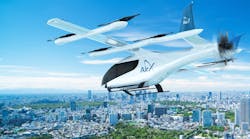Some 36,896 military and civil aircraft worth a trillion dollars are expected to be built throughout the world between 2005 and 2014, according to a study from the Teal Group, an analyst firm in Fairfax, Va.
The military component of this forecasted market is worth $311.5 billion, while the civil sector is valued at $701.4 billion. These numbers are all in 2005 dollars.
“The industry is firing on both cylinders,” says Richard Aboulafia, Teal Group vice president for analysis. “This first simultaneous civil and military market upturn in decades is giving most primes a strong boost. While some segments are weak, the supplier base has the diverse program exposure necessary to enjoy this growth.”
The forecast excludes unmanned aerial vehicles (UAVs), nonturbine aircraft, maintenance, overhaul, upgrades, and research. If all of these are included, the industry would be worth about $3 trillion to the world’s economy over the next 10 years, the analysis shows.
In additional findings, the study says that more than half of the new build market-$570.6 billion-comprises commercial transports, including regional aircraft. Fighters are second, worth $141.8 billion.
“Compare these numbers with the last 10 years, which saw deliveries of 30,575 aircraft worth $820.5 billion,” Aboulafia says. “Despite the cyclical ups and downs, this represents 23 percent growth.”
Boeing’s jetliner product line rejuvenation is leading to growing market success. Boeing’s success, coupled with Lockheed Martin’s F-35 and broad U.S. defense export market dominance, bodes well for the U.S.’s share of the industry. U.S. primes are gaining global market share, largely due to their successful embrace of globalization.
“Europe looks set to retain its market share during our forecast period, although European industrial restructuring has not reached its ultimate conclusion. And if Boeing’s lead accelerates, or if the F-35 fulfills its most ambitious expectations, Europe’s share could erode,” says Aboulafia.
At the same time, numerous macro economic trends are hurting nontraditional producers outside the U.S. and Europe.
“These ‘emerging’ producers will actually have a smaller share of the market by the end of our forecast period, although thanks to increased outsourcing by the US and European primes, many nontraditional players will still prosper,” he says.
The Teal Group is an aerospace and defense market analysis firm based in Fairfax, Va. It provides competitive intelligence to industry and government worldwide. For more information, see www.tealgroup.com.


